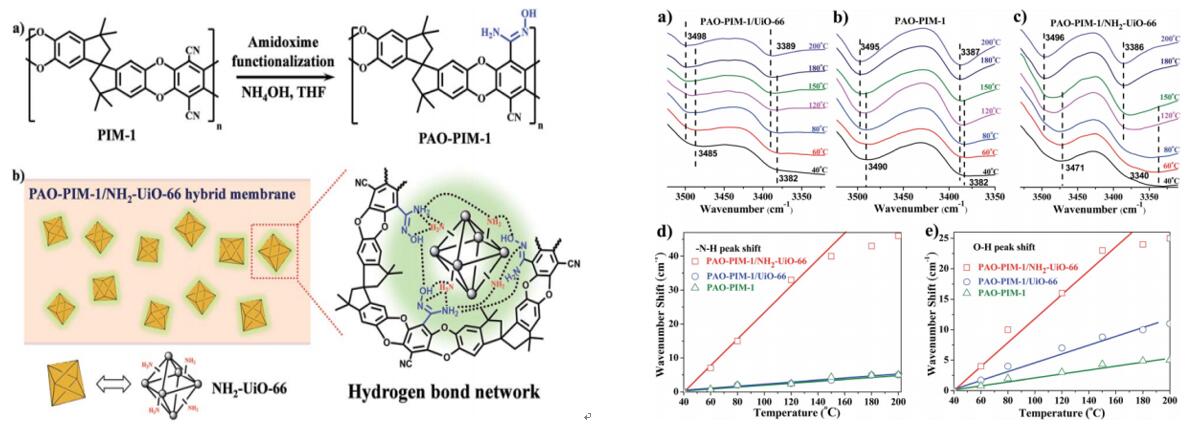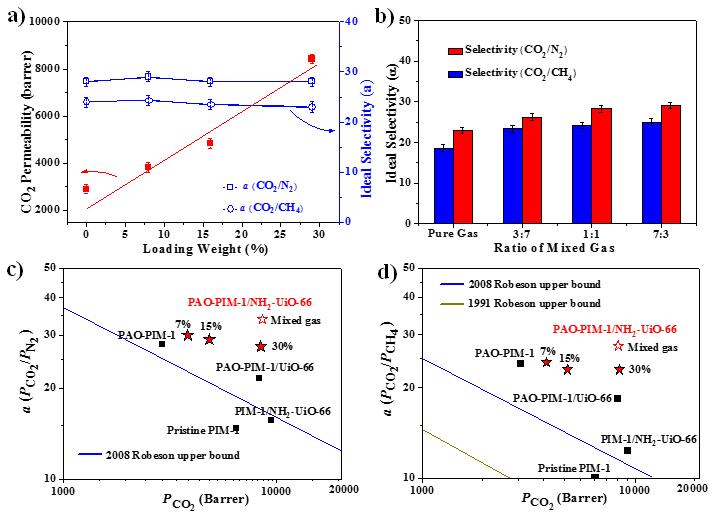Polymer-dominated membranes have aroused great attention in the field of gas separation owing to their easy processing, great variety, and low cost/environmental effectiveness. Traditional polymer membranes for gas separation possess high gas selectivity but low permeability due to small intermolecular spaces. Polymers of intrinsic microporosity (PIMs) have received considerable research interest due to their high permeability arising from their rigid and contorted chain structure.
To further improve the performance of PIMs, a series of PIM derivatives have been designed and synthesized through post-modification of the side groups of PIM or replacing rigid units in the polymer main chain. However, further improvement of the performance of PIM membranes is limited due to the intrinsic properties of the polymers. Microporous molecular-sieving materials can be effectively incorporated into organic polymers; the poor compatibility between polymers and inorganic materials inevitably creates many interfacial defects, especially for rigid polymers, such as PIMs and PIM derivatives, are used as the matrix phase. To address the interfacial compatibility issue, a coupling agent or coating inorganic materials with a thin and permeable polymer layer was used to promote better adhesion at the interface. However these can still induce interfacial voids or pore blockage.
Recently, JIN Jian's group from Suzhou Institute of Nano-tech and Nano-bionics (SINANO), Chinese Academy of Sciences, presented an effective interfacial design through forming a hydrogen bond network directly between the matrix phase and filler phase.
In the hybrid membrane, as shown in Figure 1, partially amidoximefunctionalized PIM-1 (PAO-PIM-1) as the polymer matrix and an amine-functionalized metal–organic framework (MOF), NH2-UiO-66, as the inorganic filler, amidoxime and amine groups tend to form hydrogen bonds, creating a hydrogen bond network between the two phases. A nearly ideal and defect-free interface made the hybrid membrane exhibit excellent separation performance for CO2/N2 and CO2/CH4. ( Journal of Materials Chemistry A, 2017, 4 , 10968-10977).

Figure 1. Synthetic scheme of PAO-PIM-1, the hydrogen bond network guided interface design of the hybrid membrane, temperature dependent infrared reflection (IR) spectra, N-H and O-H stretching vibration.(Image by SINANO)

Figure 2. CO2 permeability and ideal selectivity of the PAO-PIM-1/NH2-UiO-66 hybrid membrane variation trend with filler load increase, different gas ratios, relationship between gas permeability (P) and gas pair selectivity (α) .(Image by SINANO)
Contact information: Prof. JIN Jian
Suzhou Institute of Nano-Tech and Nano-Bionics ,Chinese Academy of Science
Suzhou, Jiangsu 215123, China.
E-mail: jjin2009@sinano.ac.cn


